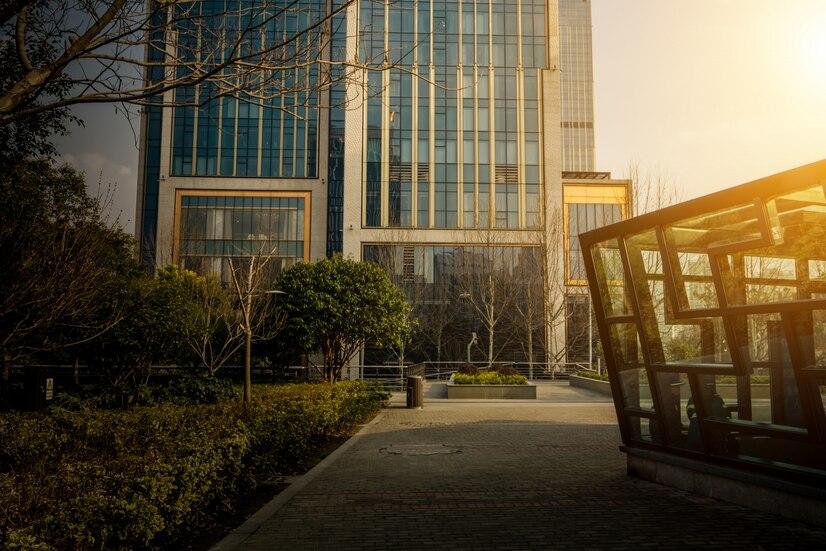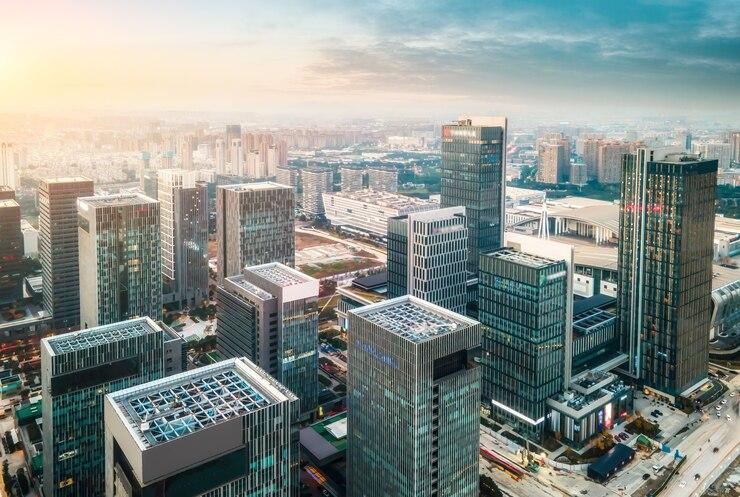



Table of Contents
- Introduction
- Types of Business Districts
- Importance of Business Districts
- Real Estate in Business Districts
- Benefits of Investing in Business Districts Properties
- Conclusion
- Faq's
Introduction
A business district, often referred to as a commercial district or central business district (CBD), is a designated area within a city or town that is primarily focused on business and commercial activities. This district typically houses a concentration of office buildings, retail stores, banks, restaurants, and other commercial enterprises. Business districts are vital to the economic health of a city as they serve as hubs for commerce, employment, and services, attracting both local residents and visitors. The infrastructure in these areas is usually well-developed to support high levels of business activity, including robust transportation networks, utilities, and other essential amenities.
Types of Business Districts
 Business District
Business District
Central Business District (CBD):
The core commercial and financial center of a city or metropolitan area.
Typically characterized by tall office buildings, corporate headquarters, government offices, and major retail establishments.
Often features high population density during weekdays and may have limited residential spaces.
Secondary Business District:
Located outside the CBD but still prominent in commercial activities.
Often developed around major transportation hubs like airports or railway stations.
Includes office complexes, hotels, retail centers, and service-oriented businesses.
Neighborhood Business District:
Found within residential neighborhoods, serving the local community's daily needs.
Characterized by smaller-scale commercial developments such as convenience stores, local shops, cafes, and small offices.
Focuses on providing services and goods to nearby residents, promoting a walkable environment.
Specialized Business Districts:
Tailored to specific industries or sectors, such as financial districts, technology parks, or medical centers.
Concentrates businesses related to the specialized industry, offering targeted amenities and infrastructure.
Often supported by research institutions, educational facilities, and specialized services.
Mixed-Use Business Districts:
Integrates commercial, residential, and recreational spaces in one area.
Promotes a live-work-play environment with a mix of offices, residential buildings, retail outlets, dining options, and entertainment venues.
Encourages urban vibrancy and supports sustainable development practices
Importance of Business Districts

Business districts play a crucial role in the economic and social fabric of cities and urban areas. Here are the key reasons why business districts are important:
Economic Hub: Business districts serve as economic engines by hosting a concentration of businesses, financial institutions, and corporate headquarters. They generate significant economic activity through commerce, employment opportunities, and tax revenue.
Employment Opportunities: These districts provide jobs across various sectors, from corporate offices and retail establishments to hospitality and service industries. They attract a diverse workforce and support career growth and development.
Infrastructure Development: Business districts often feature well-developed infrastructure, including transportation networks, utilities, and telecommunications systems. This infrastructure supports efficient business operations and enhances connectivity within the city.
Commercial and Retail Activities: They offer a wide range of goods and services, catering to both local residents and visitors. Retail outlets, restaurants, and entertainment venues thrive in these areas, contributing to the city's vibrancy and cultural diversity.
Real Estate Value: Properties in or near business districts tend to have higher real estate values due to their prime location and proximity to business opportunities. This attracts investment in both commercial and residential real estate markets.
Real Estate in Business Districts
 Business District Real Estate
Business District Real Estate
Prime Location: Business districts are centrally located within cities, offering convenient access to transportation hubs, major roads, and amenities. This accessibility enhances the desirability of properties for both commercial and residential purposes.
High Demand: Properties in business districts experience high demand from businesses seeking proximity to clients, partners, and other businesses. This demand drives rental yields and property values.
Diverse Property Types: Business districts feature a mix of property types including office buildings, retail spaces, hotels, and mixed-use developments. This diversity caters to various business needs and enhances investment opportunities.
Stable Rental Income: Commercial properties in business districts often provide stable rental income due to long-term leases with established businesses. This stability is attractive to investors seeking predictable cash flow.
Capital Appreciation: Real estate in business districts tends to appreciate faster than in other areas due to continuous urban development, infrastructure improvements, and the prestige associated with these locations.
Supportive Infrastructure: Business districts typically have robust infrastructure such as high-speed internet, reliable utilities, and advanced transportation networks. These amenities are crucial for businesses and residents alike.
Urban Amenities: Proximity to cultural attractions, dining options, entertainment venues, and green spaces enhances the quality of life for occupants of business district properties, making them desirable places to live and work.
Benefits of Investing in Business Districts Properties
Supportive Infrastructure: Robust infrastructure in business districts, such as high-speed internet, reliable utilities, and advanced transportation networks, supports business operations and enhances property value.
Urban Amenities: Proximity to cultural attractions, dining options, entertainment venues, and green spaces enhances the quality of life for occupants, making business district properties attractive for both commercial and residential purposes.
Resilience: Business districts demonstrate resilience during economic downturns due to the presence of established businesses, financial institutions, and governmental offices that continue to operate and contribute to local economies.
Long-Term Growth Potential: Business districts are integral to urban growth strategies, ensuring sustained demand for real estate investments over the long term as cities expand and evolve.
Prestige and Branding: Owning property in a prestigious business district enhances an investor's portfolio, offering a sense of prestige and branding associated with prominent commercial and residential addresses.
Conclusion
In conclusion, business districts represent more than just commercial centers; they are engines of economic growth, innovation, and urban development. Investing in properties within these districts offers substantial benefits, including stable rental income, capital appreciation, and diversification. The prime locations, robust infrastructure, and vibrant ecosystems of business districts ensure enduring demand and value. Moreover, these districts play a crucial role in shaping the identity and competitiveness of cities, contributing to their economic resilience and cultural richness. As such, investing in business district properties not only secures financial returns but also supports sustainable urban growth and enhances community well-being.
explore further
Latest from Encyclopedia
More from Interactions
Resources
Dwello, for every home buyer, is a way to go from 'I feel' to 'I know', at no extra cost.




